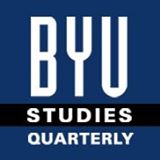BYU Studies

Keywords
Mormon studies, polygamy, Utah, St. George, polygyny
Abstract
This article is one of a set on the practice of polygamy in the Mormon settlement of St. George, Utah, from 1861 to 1880. For years researchers have known that St. George had an unusually high percentage of its population living in polygamous households and have been grappling with the reason why and what those high percentages tell us about the practice of plural marriage in Utah generally.
The demographic work to understand the lives of those families in plural marriage is labor intensive, and this article provides only a snapshot of it in June 1880, when Daniel Handley McAllister visited the houses of St. George, Middleton, and Price City to take the federal census. The census revealed that polygamous men, women, and their families accounted for 41.4 percent of St. George's population in 1880.
One interesting conclusion reached by this study is that two parallel cultures seemed to prevail in St. George. The number of polygamists' daughters entering plural marriage suggests that polygamous relationships were to some degree replicating themselves in the second generation. But so were monogamous relationships: monogamous parents raised monogamous daughters. Another conclusion is that the incidence of plural marriage in St. George in 1880 was definitely influenced by the presence of the first LDS temple, which was dedicated there in January 1877. This article includes a list from the 1880 census of St. George's plural families.
Recommended Citation
Daynes, Kathryn M.
(2012)
"Striving to Live the Principle in Utah's First Temple City: A Snapshot of Polygamy in St. George, Utah, in June 1880,"
BYU Studies: Vol. 51:
Iss.
4, Article 5.
Available at:
https://scholarsarchive.byu.edu/byusq/vol51/iss4/5
